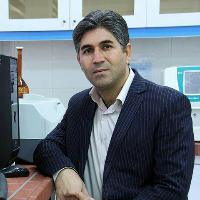Investigation the yield, competitive indices and economical advantage ofpurple coneflower (Echinacea purpurea Moench.) and sesame (Sesamum indicum L.) intercropping pattern in different climate conditions of Mazandaran province
of this experiment was to evaluate the response of purple coneflower (Echinacea purpurea Moench) medicinal plant intercropped with sesame (Sesamum indicum L.) to Mazandaran microclimate differences. The experiment was carried out in a randomized complete block design with three replicates in Simorgh and Savadkooh regions of Mazandaran province during growing season of 2015. The treatments consisted of sole cropping of purple coneflower (Pc), 75% Pc+25%sesame (Se), 50% Pc+50% Se, 25% Pc+75% Se and sole cropping of Se. Some indices such as land equivalent ratio (LER) and monetary advantage (MAI) of intercropping and actual yield loss or increases (AYL) and aggressivitty (A) of two plant species were evaluated based on sesame seed yield and purple coneflower biomass. The statistical analysis of experiment data was performed by using SAS software and mean comparison of evaluated traits was done by Duncan multiple rang test at 5% level of probability.
In this current experiment, the purple coneflower sole cropping in the Savadkooh region had the highest economical yield (3631 kg ha-1) with around 17% increases as compared to the Simorgh region. Also, the 75% purple coneflower+25%sesame intercropping had the same economical yield in two regions and the minimum economical yield was belonged to sesame sole cropping in the Savadkooh region (1716 kg ha-1). According to competitive indices of two species, purple coneflower (Apc) and sesame (Ase) at the range of Apc=0.02-0.16 and Ase=0.10-0.26 were the dominant species in the Savadkooh and Simorgh regions, respectively. Regarding to temperature and relative moisture severity decreases in the Savadkooh as compared to the Simorgh region during growth season, purple coneflower had a higher aggressivitty and dry matter accumulation because of the optimum environmental conditions. Furthermore, the highest purple coneflower actual yield index was belonged to 50% Pc+50% Se in the Savadkooh region (AYLpc=0.23) while actual yield loss was observed in 25% Pc+75% Se planting pattern in the Simorgh region (AYLpc=-0.14). Also, the most sesame actual yield index (AYLse=0.26) was belonged to 25% Se +75% Pc intercropping. The results indicated that different intercropping were grouped in the same statistical category and showed up to 7% increases in land equivalent ratio as compared to sole cropping. Also, the 25% Se +75% Pc planting pattern had the highest monetary advantage index (MAI=1823).
In conclusion, results indicated that the intercropping influenced by two regions microclimate differences. Accordingly, sesame and purple coneflower in 25 and 50 proportion in the intercropping had the best competitive potential in the Simorgh and Savadkooh regions, respectively.
- حق عضویت دریافتی صرف حمایت از نشریات عضو و نگهداری، تکمیل و توسعه مگیران میشود.
- پرداخت حق اشتراک و دانلود مقالات اجازه بازنشر آن در سایر رسانههای چاپی و دیجیتال را به کاربر نمیدهد.


